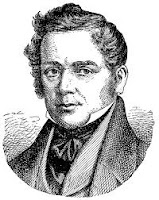“Music is a moral law. It gives a soul to the universe, wings to the mind, flight to the imagination, a charm to sadness, and life to everything. It is the essence of order, and leads to all that is good, just and beautiful, of which it is the invisible, but nevertheless dazzling, passionate, and eternal form.” Plato
The Collaborative Pianist

Readers have asked about The Collaborative Pianist's Guide to Practical Technique. What, for example, makes it practical? Well, here's the thing. Collaborative pianists as a group have been neglected when it comes to studying technical matters. Collaborators must, of course, have all the basic technical skills as soloists and be able to apply them from mezzo forte and under. Collaborators, too, will have studied solo repertoire on their way up the ladder to excellent pianism, to the place where they feel the calling to collaborate with other artists. But what then? If we don't recommend exercises by Czerny and
 |
| Carl Czerny |
Hanon and their ilk, and we don't, then how is the collaborator to continue to advance in a logical fashion? Well, I'm glad you asked. Instead of wasting time on mindless exercises or taking up precious practice hours on solo etudes by Chopin or Rachmaninoff (not that that would be a bad thing, only time-consuming), studying technical excerpts from the collaborator's repertoire would be time well-spent. These are
 |
| Charles-Louis Hanon |
passages that will be needed at some point in the collaborative pianist's career. Better to get a head-start because that emergency call may come tonight for a concert tomorrow that includes the Kreuzer Sonata. (I'm not kidding.) Say "no" once and they don't call again.



No comments:
Post a Comment